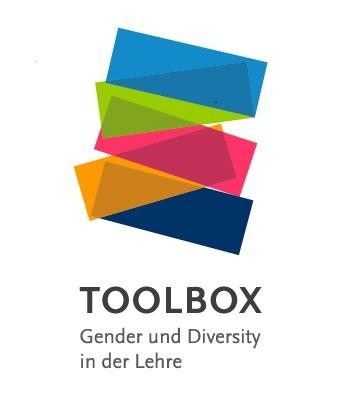How to Create an Accessible Study Environment
Helpful Information for Lecturers
Students face different challenges in their day-to-day life, with different requirements in terms of their needs, resources, and experiences. Taking into consideration structural inequalities and the individual circumstances of all students – especially those with chronic illnesses and disabilities – we want to ensure that everyone benefits from equal opportunities by offering our support. Instructors and employees are more than welcome to reach out to us if they have any questions.
In the following, you will find information and tips on what can be helpful for a more inclusive course design for students and what offers are available at the FU Berlin.
As we saw during the Covid-19 pandemic, some students who fall into the high-risk category depend significantly on digital courses. CeDiS can provide the technical means to help you set up a hybrid or online course or examination setting. You can find support, recommendations, and instructions on how to digitalize your teaching for the 2023/2024 winter semester on the CeDiS website “Teaching and Learning Online” (in German) www.cedis.fu-berlin.de/online-lehren-lernen.
You can refer to the Gender and Diversity in Teaching Toolbox for further information and resources. The Toolbox is a joint project organized by the Chief Gender Equality Officer and Margherita von Brentano Center at Freie Universität Berlin.
The following accommodations and setups can be helpful for students who have chronic illnesses or disabilities:
Preparation
Participation and Accessibility
- Clearly indicate that you are open to answering your students’ questions after class ends and tell them when and where you hold your office hours.
- Highlight that students can request compensation for disadvantages and refer to the Office for Students with Disabilities and Chronic Illnesses at Freie Universität Berlin.
Classrooms and Lecture Halls
- Check your classrooms and lecture halls for barriers related to how the building or room is built.
- If you have to spontaneously change venue or the course session is canceled then you should make sure that all students are notified immediately via email. Simply sticking a note to the classroom door, for example, may not be helpful for students who are blind or partially-sighted.
- Please use a microphone when you are lecturing in larger rooms.
Scheduling and Organization
- If you are planning on holding long block or evening courses, then we suggest that you consider alternative formats if possible. Long class sessions can be particularly challenging for students who have chronic illnesses or who have childcare duties or other caregiver responsibilities.
- Organize your excursions well in advance and include your students in the planning. This allows you to factor their individual needs into the excursion.
- Arrange when you will be taking breaks before the class begins.
Course Materials
- Make your written materials available ahead of class. This is helpful for all students, as it allows them to prepare for the class. Make your documents as accessible as possible.
Carrying Out Your Course
Course Atmosphere
- Create a calm atmosphere by preventing background noise and making sure that participants do not talk over each other.
- Make sure that the room is well-ventilated with fresh air and have regular breaks.
- Please bear in mind that speaking in front of large groups and/or strangers is difficult for many people. Listen carefully, do not make any noise, and let other students speak without interruption. Refrain from putting time pressure on students if you can.
- Summarize what you have taught at the end of each class.
Technical Aids
- Promote the purposeful use of technical aids among students in their learning processes.
- Provided that you respect the author’s rights to copyrighted material, allow students to take photos and record class material to make it easier for them to work on their notes later on.
- If you have used any graphic elements in your lecture slides, then describe them as you are reading out your notes.
- Provide a sufficient amount of alternative text to describe screenshots and other graphics.
- Use digital or virtual teaching options. CeDiS at Freie Universität Berlin will help you with the setup. We are now able to offer livestreaming from university lecture halls which means that you can organize hybrid courses. You can find more in-depth information on digital and hybrid teaching options in the Gender and Diversity in Teaching Toolbox.
After Your Class: Making Materials Available
- Record your lectures and make them available to your students with subtitles after class. It is now possible to add subtitles to recordings on Freie Universität’s video platform Vbrick Rev.
- Take advantage of the new Blackboard Ally tool! The new tool is directly integrated into the central learning platform Blackboard and supports the digital accessibility of learning materials. It includes, among other helpful tools, an accessibility checker. You can find basic information here:
Ally for LMS Help for Instructors
Ally for LMS Help for Students
Making Documents Accessible
Scanning Literature
- Before you begin scanning you should decide whether you want to create a PDF or .doc file. We recommend saving your scan as a .doc file because this makes it easier to edit later.
- Almost every scanning software is equipped with optical character recognition (OCR). This makes it possible to read and display the scanned text precisely. A text that has been scanned without OCR is simply an image file and cannot be processed digitally, which constitutes a significant barrier to students with impaired vision.
Word Documents
- Use templates for headings.
- Add alt texts to any images or objects you use.
- Make sure that your tables are easy to follow and clearly structured.
- Use templates in documents.
- Make sure that the titles in headings are short.
- Use meaningful hyperlink texts.
- Provide subtitles for any audio material you use.
- Make sure that your Microsoft Word document is accessible by clicking on the menu item. “File,” then “Info,” then “”Check for Issues” under “Inspect Document,” and then “Check Accessibility” (this applies to Microsoft Word 2010).
PowerPoint Presentations
- Use the slide layouts provided in PowerPoint.
- Type in the slide title using the placeholder provided and not a simple text box.
- Use the bullet points and numbering options in PowerPoint to create lists.
- Check the order of information and other elements on your slides.
- Choose a sans serif font like Calibri or Verdana.
- Use a font size between twenty-four and twenty-eight – slide titles should be twenty-eight at the very least.
- Ensure that there is a strong contrast between the text and the background and avoid gradients and text on background graphics.
- Avoid using effects and too many visual gimmicks.
Please also refer to the wide array of in-depth information provided by CEDIS at Freie Universität Berlin on how to set up an online class; making texts accessible; navigation and links; making images and audio and video content accessible; interactive and animated content; and further tips for websites, PDFs, and Word and PowerPoint files. You can find an overview of tips to help you make websites as accessible as possible on this website.
Further Information
Employees of Freie Universität Berlin can find further information on compensation for disadvantages on the internal platform
In the “Teaching and Education” process portal there is further information on the steps of the process to apply for compensation for disadvantages for exams. You will also find an overview of the roles and tasks of different actors involved in the process and support services.


